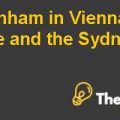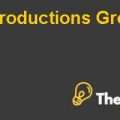
Midland Energy Inc. Case Solution
1. How are Mortensen’s estimates of Midland’s cost of capital used? How, if at all, should these anticipated uses affect the calculations?
Mortensen’s estimates for cost of capital would be used for;
- Assets appraisals for capital budgeting and being used for financial accounting
- It can be used for assessing the performance
- It shows better results when the company is involved in mergers and acquisition
- It results in better stock repurchase decision
The cost of capital is a very important element in the weighted average cost of capital calculations. Moreover, itis very useful at division level for the company as well as for the corporate level.
On the other hand, the cost of capital affects the calculation in following method:
- With the help of cost of capital, WACC is calculated that shows the average risk of the company’s projects
- It adjusts the WACC that shows the risk of the project.
- Mortensen’s estimates of cost of capital would provide the guidance of appropriate WACC for the division’s project as well as for individual or corporate project.
2. Calculate Midland’s corporate WACC. Be prepared to defend your specific assumptions about the various inputs to the calculations. Is Midland’s choice of EMRP appropriate? If not, what recommendations would you make and why?
Mortensen has calculated the cost of debt for each division by adding the premium, spread instead of U.S treasury rate of 10 years maturity (as 1 year is a short period and 30 years is along period of time). It is calculated as rd. is equal to Treasury bill rate plus spread (given in table 1). In order to identify the cost of debt, the interest factor is used, which is assumed as 40%. In order to calculate the cost of equity, it is calculated as risk free rate plus beta (EMRP). The weighted average cost of capital (WACC) is used as weight of debt, weight of equity and both will be multiplied by the cost of debt and cost of equity respectively. The other targeted WACC is calculated by using the book value of the company
For EMRP, whichis taken from exhibit 6, it is observed that the table shows EMRP of 6% however,based on the industry survey, it shows that it is in the range of 2.5% to 4.7%.Thesefigures were calculated from industry knowledge, which shows better and up to date EMRP for better result. As the analyst, bankers and investors have better knowledge from industry and corporates perspectives, therefore the result is concluded based on the following estimates. The table below shows the actual and targeted WACC based on different EMRPs. The actual WACCis calculated based on forward rate give in table 1 whereas, thetargeted WACC is calculated based on book value of equity and liabilities.
Therefore, it is considered that6% or 6.5% shows better results for the EMRP as they show better figures in calculations.
1. Should Midland use a single corporate hurdle rate for evaluating investment opportunities in all of its divisions? Why or why not?
A hurdle rate is the minimum required rate of return on the investment and it is used in the discounting cash flow that is derived from WACC. The company has a diverse business unit that shows different sets of risks, which can be viewed from the equity beta. As the risk profiles of different divisions are different, thus the hurdle rate for evaluating business opportunities for those units or divisions should also be different based on their risk exposure that can be measured by beta (b)..................
This is just a sample partial case solution. Please place the order on the website to order your own originally done case solution.










